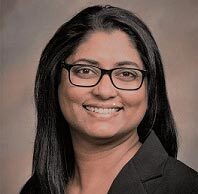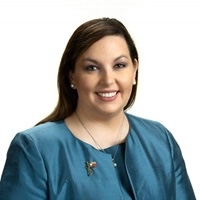Ask the Professors: How Texas NPs Can Fight the Rural Health Crisis
Find NP Schools
For the 2023-2024 academic year, we have 140 NP schools in our database and those that advertise with us are labeled “sponsor”. When you click on a sponsoring school or program, or fill out a form to request information from a sponsoring school, we may earn a commission. View our advertising disclosure for more details.
“Lack of access to healthcare in the rural areas forces the residents to go to emergency rooms for routine and non-emergent medical service, increasing cost and placing additional burdens on the healthcare system. . .Texas NPs are well-positioned to help alleviate the crisis facing our healthcare system.”
Annie Abraham, DNP, Clinical Assistant Professor at Baylor University’s Louise Herrington School of Nursing (LHSON)
Texas is home to the largest rural population of any state. But, according to the Texas Hospital Association, only 27 percent of the state’s hospitals are located in rural areas. This disparity has been compounded in recent years by the closure of more than 20 rural hospitals, largely due to uncompensated care (Texas is the uninsured capital of America). When hospitals close, they take primary care providers and partner clinics along with them.
The result is that Texas now has a rural healthcare crisis. More than 20 percent of the state’s counties have only one doctor or none at all. The state has 436 areas designated as Health Professional Shortage Areas (HPSA), areas where there are more than 3,500 patients for a single primary care provider. That gives Texas the second-highest HPSA count in the country, meaning many rural patients lack access to prevention, screening, immunization, and other basic forms of care.
Meet the Experts

Annie Abraham, DNP, APRN, FNP-BC
Dr. Annie Abraham is a clinical assistant professor at the Baylor University Louise Herrington School of Nursing. She earned her MSN from the University of Texas at Arlington, and her DNP from Texas Christian University.
Prior to her role at Baylor, she served as an associate clinical professor at Texas Woman’s University and as adjunct FNP clinical faculty at the University of Texas at Arlington. Dr. Abraham has been practicing as a family nurse practitioner for 15 years in the DFW area, and is an active member of the American Association of Nurse Practitioners, Texas Nurse Practitioners, and North Texas Nurse Practitioners. In 2000, she received the “Nurse of the Year Award” from the Baylor Center for Pain Management.
Dr. Abraham was interviewed for this feature in both 2020 and 2024.

Erin Pérez, DNP, APRN, ANP-C, AGNP-C, ACHPN
Dr. Erin Pérez is the president of Texas Nurse Practitioners, the largest state NP organization in the United States. She is an adult geriatric NP who sub-specializes in palliative and hospice care. She also serves as chair of the Texas Palliative Care Interdisciplinary Advisory Council—the first nurse and NP to Chair a Texas Advisory Council.
Dr. Pérez is recognized as a pioneer and trailblazer for the nursing profession and high-risk populations. Her grassroots advocacy, invited testimony, and policy work, have helped enact many meaningful changes for nurses and their patients in Texas. She continues to bring transformational leadership to state, national, and international forums on healthcare, APRNs, and broader healthcare policy. In 2021, Dr. Pérez became the first NP elected to municipal office in Texas and the first Latina to serve on the Live Oak City Council. She is currently one of five nurses in an elected office in Texas.
Dr. Pérez was interviewed for this feature’s update in 2024.
How Texas NPs Help Improve Access to Care
“Lack of access to healthcare in the rural areas forces the residents to go to emergency rooms for routine and non-emergent medical service, increasing cost and placing additional burdens on the healthcare system,” says Dr. Abraham.
NPs could be the answer to Texas’s rural healthcare problems. According to the American Association of Advanced Nurse Practitioners (AANP), there are over 385,000 NPs currently practicing throughout the nation. As high-quality health providers, they’re expertly trained to provide high-quality care across the lifespan. And they can fill a critical gap, especially in rural settings: over 85 percent of NPs are trained in primary care, and they’re more likely than physicians to settle in rural areas.
“The nursing profession has a long history of rising to the occasion and facing challenges head-on,” Dr. Abraham says. “NPs are trained to provide quality care in a primary care setting, and Texas NPs are well-positioned to help alleviate the crisis facing our healthcare system.”
Today, one in four rural care providers is a nurse practitioner, and the number is even higher in states with full practice authority laws. Further modernization of the occupational licensing laws regulating NPs would decrease the number of patients living in rural primary care shortage areas from 23 million to 8 million, according to a report from United Health Group.
“At Baylor University, Louise Herrington School of Nursing, all DNP-FNP students are required to complete at least one clinical rotation in a medically underserved facility,” Dr. Abraham says. “This experience prepares students to not just to provide care but to be leaders in rural areas, or in any setting with low resources.”
Other academic programs would be wise to follow LHSON’s lead. But after graduation, DNP students may find they’re not able to put all that they’ve learned into practice. In many states, including Texas, nurse practitioners are prevented from providing the full spectrum of care for which they are trained and certified without first obtaining a contract with a physician.
Anachronistic requirements on supervision, signatures, prescriptions, and licensure are still included in state law, and they’re blocking Texas NPs from serving rural communities to the fullest extent of their ability. This is the only profession that requires a contract with another professional before being able to practice in the field in which they are trained and licensed.
Dr. Abraham, her colleagues, and groups like Texas Nurse Practitioners (TNP) are fighting back with advocacy efforts that reach all the way into the state legislature.
“It is my honor to be an active member of the local, state, and national NP organizations that are advancing our profession,” Dr. Abraham says. “My goal as faculty is to prepare my students to not just think clinically but systemically, where they can identify issues in the system and bring about change.”
Top Advocacy Issues for NPs in Texas
Full Practice Authority
In Texas, NPs face barriers in practicing to the full extent of their education, training, licensure, and board certifications. Outdated, costly, and burdensome requirements (such as signed delegation agreements and supervisory requirements) contractually tie NPs to physicians; this stymies the ability of NPs to plug critical primary care gaps in rural areas.
Putting NPs under the exclusive regulatory authority of the Texas Board of Nursing would empower NPs to provide the services they are certified to provide more freely. Bills that allow for full practice authority are often on the legislative agenda for Texas but have yet to break through and become law.
“My hope is that soon all NPs in Texas can practice without any unnecessary restrictions and burdens placed on them,” Dr. Abraham says.
Collaborative agreements are burdensome, but collaboration itself is not: NPs, like all other medical professionals, frequently collaborate with physicians and other medical professionals in the normal course of providing care.
“In my clinical practice, I work with two other NPs,” Dr. Abraham says. “We have a great relationship with our collaborating physician, who practices at a different clinic. But the current regulations delay care for patients, for example, when we cannot sign home health orders or certify the need for therapeutic shoes for patients with diabetes. The patient must, at times, wait for days until the physician receives the form, signs it, and then faxes back to us.”
Prescriptive Authority
Texas is one of only a few states that does not grant full prescriptive authority of Schedule II substances for nurse practitioners outside of narrow exceptions for hospital and hospice care. This reduces the ability of NPs to treat patients with chronic illness, cancer, mental health issues, and other conditions that may require prescriptive intervention. More progressive and practical legislation would ensure wider prescriptive authority for NPs, including Schedule II substances.
New Nurse Practitioner Support
Texas needs to unlock the potential of its existing nurse practitioners and support the flow of new nurse practitioners into the state.
To do that, Texas must streamline and fast-track the licensure application process for active, out-of-state NPs who want to practice in the state. Making it easier for NPs to work in Texas is a simple but critical step in addressing provider shortages. Expediting licensing requirements for out-of-state NPs would also open up options for telemedicine and telehealth practice across state lines.
Another way to support nurse practitioners’ flow is to improve graduate nursing education funding. Nurse practitioners are now expected to earn a doctoral degree, and they experience a burden of cost and time on their path to joining the healthcare workforce. A new incentive program and a dedicated funding stream would increase the number of grants, clinical placements, and clinical preceptorships for graduate nursing students; this, in turn, would help build the next generation of healthcare workers the state needs.
Update: The Practice Landscape for Texas NPs in 2024
The past four years have brought about several significant changes in the practice environment for NPs in Texas. The value of the state’s NP workforce has only increased. Texas remains second only to California regarding the number of jobs for NPs (BLS 2023), and NPs continue to play a critical role in serving the state’s patients in both rural and urban areas.
“The most substantial change since 2020 was Governor Abbott’s Covid-era waiver of the law requiring nurse practitioners to contract with a physician before they can practice,” Dr. Pérez says. “Freed of these burdensome restrictions, nurse practitioners stood up proudly and provided life-saving healthcare for millions of Texans in the midst of the pandemic. Decades of evidence consistently show that financial contracts are not needed to practice our nursing profession and NP role and provide high-quality, safe care to patients.”
Regrettably, those Covid-era waivers were not made permanent. But Texas still faces a significant health crisis: many Texans in rural and other underserved parts of the state are unable to obtain even the most basic healthcare services. With widespread primary healthcare shortages, the state’s NPs are well-suited to provide rural care but are still facing many of the same barriers they faced in 2020.
“Nurse practitioners want to practice in rural and medically underserved areas – which is more than three-quarters of the state—where the most help is needed,” Dr. Pérez says. “However, when they have to pay large amounts of money to a contracting physician and face their clinic’s closure if that physician suddenly stops practicing, it makes it much more difficult for them to reach the millions of Texans who need them. With rural hospitals stretched thin or closing entirely, the need is growing more urgent by the day.”
Patients are increasingly supportive of NPs practicing to the fullest extent of their scope of practice. A 2022 poll of Texas voters aged 50 and older, conducted by AARP, found that 83 percent supported NPs as primary care providers. That positive sentiment is reverberating in other demographics, too—and leading to strengthened advocacy efforts around NP-related policies.
“Administrators are recognizing the unique expertise of NPs and are increasingly maximizing their contribution to the healthcare system,” Dr. Abraham says. “It is also exciting to see several groups such as the Texans for Healthcare Access working together to eliminate barriers in healthcare and empower APRNs to enhance patient access and choices in Texas.”
In 2021, Texas NPs were granted the ability to sign death certificates for patients. And in 2023, they could certify health assessments and sign for guardianship proceedings. But full practice authority for NPs, such as that proposed in SB 1700, or the HEAL Texans Act (Healthcare Expanded and Access Locally Act), has yet to pass.
“I wholeheartedly support full practice authority for NPs in Texas,” Dr. Abraham says. “This is important for ensuring access to healthcare for people in underserved and rural areas. Removal of mandatory physician oversight will allow NPs to fully function within the scope of practice of their education and training.”
Dr. Pérez points out that full practice authority does not expand an NP’s scope of practice—it merely removes an unnecessary and often expensive obstacle for NPs who wish to provide care to those who need it most. The removal of such red-tape requirements would seem to fit the MO of a state where small business is a priority and needless government intervention is discouraged. But a 2022 report by the Cato Institute ranked Texas worst in the nation for occupational licensing laws, including licensing laws that affect NPs.
“Texas prides itself on being the number one state for business, yet in the midst of significant workforce shortages in healthcare, we continue to be home to the most burdensome licensing laws in the country,” Dr. Pérez says. “With an estimated 1,000 people moving to Texas per day, we need all hands on deck for patients. Allowing all professionals the ability to practice to the top of their license will better position the state to address our current and future healthcare workforce needs, especially in rural and underserved areas.”
Texas NPs have data on their side. A 2023 study by the TLL Temple Foundation found that modernizing practice authority laws in Texas would alleviate the primary care shortage by approximately 32 percent, create an estimated cost savings of up to $47.7 million in the first biennium, and add nearly half a billion to Texas GDP in the first year alone.
This only adds to the half-century of research that has repeatedly shown that NPs provide high-quality care. NP services can effectively and efficiently address the rural care crisis in Texas. And, Dr. Pérez notes, of 27 states, the District of Columbia, the US military, the VA, and some US territories that have removed contract mandates for NPs, not a single one has reversed the policy or found evidence that the quality of patient care declined.
“Under a less burdensome system, rural and medically underserved patients would have a much better chance to be seen in the first place, instead of indefinitely putting off an hours-long trip to see a provider until a manageable condition becomes much more serious,” Dr. Pérez says.
The crisis around access to care, particularly in rural areas, will not go away. The population is aging, and the number of older Texans is projected to increase by three million by 2030, with many of those patients requiring additional care. Without progressive legislation that makes Texas a competitive and attractive place for NPs to work, Texas may lose some of its nursing workforce to other states with more practical attitudes toward full practice authority—an outcome it cannot afford.
“Freeing nurse practitioners to practice to the extent of their education, training, licensure, and board certification is a no-risk, no-cost way to improve access to care for all Texans, both immediately and in the longer term,” Dr. Pérez says.
When faced with the crisis of Covid-19, Texas turned to its nurse practitioner workforce to help care for the state’s most vulnerable. Now, access to care—particularly in rural areas—is at crisis levels, too. The state would be wise to empower its NPs once again.
“I continue to maintain a positive outlook regarding the future of NP practice, as we bring incredible value to the healthcare system,” Dr. Abraham says. “With increased autonomy, NPs can continue to function as an integral part of the healthcare team and provide better access to healthcare for Texans.”

Matt Zbrog
WriterMatt Zbrog is a writer and researcher from Southern California, and he believes nurse practitioners (NP) are an indispensable component of America’s current and future healthcare workforce. Since 2018, he’s written extensively about the work and advocacy of NPs, with a particular focus on the rapid growth of specialization programs, residencies, fellowships, and professional organizations. As part of an ongoing series on state practice authority, he’s worked with NP leaders, educators, and advocates from across the country to elevate policy discussions that empower NPs. His articles have featured interviews with the leadership of the American Association of Nurse Practitioners (AANP), the National Association of Pediatric Nurse Practitioners (NAPNAP), and many other professional nursing associations.